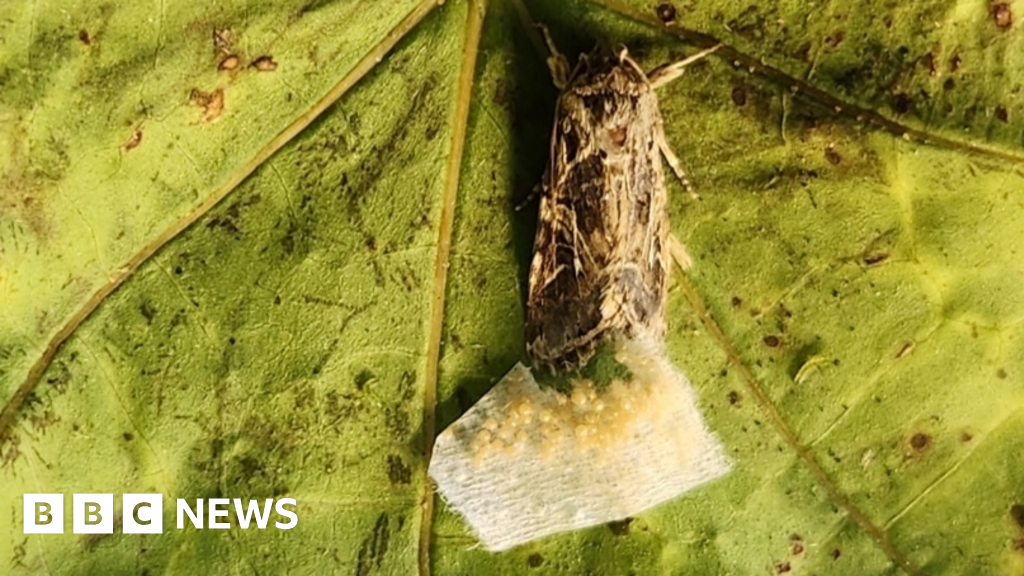Science
Animals Respond to Plant Sounds, Unveiling New Ecosystem Links

Research from Tel Aviv University has revealed that animals, specifically female moths, respond to sounds emitted by plants, suggesting the existence of a previously unknown ecological interaction. The study, published in the journal eLife, indicates that these moths avoid laying their eggs on tomato plants that produce distress signals, implying these plants may be unhealthy.
The groundbreaking findings build upon earlier research from the same university that demonstrated plants can emit sounds when they are distressed. While these noises fall outside human hearing range, many insects, bats, and some mammals can detect them. According to Prof Yossi Yovel, who led the research, “This is the first demonstration ever of an animal responding to sounds produced by a plant.”
The team conducted a series of carefully controlled experiments to confirm that the moths were reacting to the sounds rather than the plants’ visual characteristics. They aim to further explore the types of sounds produced by different plants and whether other animal species also make decisions influenced by these auditory cues. “There could be many complicated interactions, and this is the first step,” noted Prof Yovel.
Another interesting line of inquiry involves whether plants can communicate distress to each other through sound. Prof Lilach Hadany, also of Tel Aviv University, highlighted the potential for plants to respond to signals from neighboring plants, such as conserving water during drought. “This is an exciting question,” she stated in an interview, emphasizing that plants under stress may be more concerned about their neighbors.
The researchers reaffirmed that plants are not sentient; rather, the sounds they produce result from physical changes in their environment. This discovery suggests that the sounds may serve as vital signals for other animals and potentially other plants capable of perceiving them. If this is indeed the case, it raises questions about how plants and animals may have coevolved to communicate for mutual benefit.
“Plants could evolve to make more sounds or louder ones if it benefits them, while the hearing of animals may adapt to pick up this vast amount of information,” explained Prof Hadany. “This is a vast, unexplored field—an entire world waiting to be discovered.”
In the experiment, the focus was on female moths, which typically lay their eggs on tomato plants, allowing the larvae to feed on the plant once they hatch. The researchers aimed to determine whether the moths would heed the distress signals from dehydrated plants and avoid laying eggs on them. The results confirmed that the moths did indeed avoid laying eggs, responding directly to the sounds produced by the plants.
This pioneering research opens the door to further investigations into the intricate relationships between plants and animals, highlighting a complex web of interactions that could reshape our understanding of ecosystems. The findings underscore the need for continued exploration into the communication methods employed by both flora and fauna in their natural habitats.
-

 Entertainment2 weeks ago
Entertainment2 weeks agoAndrew Pierce Confirms Departure from ITV’s Good Morning Britain
-

 Health4 months ago
Health4 months agoFiona Phillips’ Husband Shares Heartfelt Update on Her Alzheimer’s Journey
-

 Health4 months ago
Health4 months agoNeurologist Warns Excessive Use of Supplements Can Harm Brain
-

 Science2 months ago
Science2 months agoBrian Cox Addresses Claims of Alien Probe in 3I/ATLAS Discovery
-

 Science2 months ago
Science2 months agoNASA Investigates Unusual Comet 3I/ATLAS; New Findings Emerge
-

 Entertainment1 week ago
Entertainment1 week agoGogglebox Star Helena Worthington Announces Break After Loss
-

 Science2 months ago
Science2 months agoScientists Examine 3I/ATLAS: Alien Artifact or Cosmic Oddity?
-

 Entertainment1 month ago
Entertainment1 month agoTess Daly Honoured with MBE, Announces Departure from Strictly
-

 Entertainment2 months ago
Entertainment2 months agoLewis Cope Addresses Accusations of Dance Training Advantage
-

 Entertainment5 months ago
Entertainment5 months agoKerry Katona Discusses Future Baby Plans and Brian McFadden’s Wedding
-

 Science2 months ago
Science2 months agoNASA Investigates Speedy Object 3I/ATLAS, Sparking Speculation
-

 Entertainment5 months ago
Entertainment5 months agoEmmerdale Faces Tension as Dylan and April’s Lives Hang in the Balance









